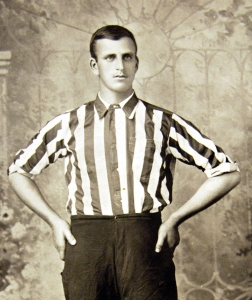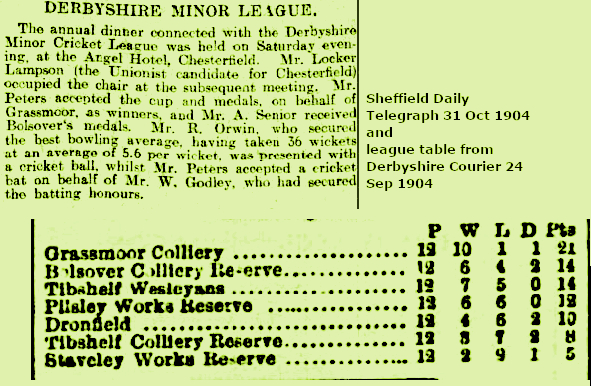
In the eighteenth and nineteenth centuries local men were chosen to take turns in serving as officials to manage the township of Hasland. Their duties included levying rates for the benefit of the township for repairs to roads and assisting the poor, and keeping the peace, the latter the particular responsibility of the parish constable. From March 1815 to March 1816 Grassmoor man David Marsh was constable for the township of Hasland.
It is the indispensable duty of every constable where his services and authority are required to quell affrays and to preserve the peace, to repair immediately to the spot and to apprehend the affrayers. In such situations however, great presence of mind and discretion are necessary.
By the common law all constables are authorised to command affrayers to keep the peace and to depart…
David Marsh was 31 years old, the eldest son of William and Mary Marsh of Grassmoor, though the family were sometimes said to be of Grasshill. David seems to have divided his time between Grasshill and Whittington, where his wife’s family lived. He eventually moved to Whittington, and farmed at Glass Hill there; his son was born in Hasland township in 1818, but baptised at Whittington.
Constables are the principal engines by which the laws are to be put in execution, and it is of the greatest importance that they should be zealous, active and efficient…
The solemn oath administered to every constable on his admission to office [is] that “he shall well and truly serve our sovereign lord the King according to the best of his skill and knowledge” …
David Marsh was sworn in as constable at Chesterfield on 8 May 1815. He claimed expenses of 2/6 (12 ½ p) for every full day of work done for the township, plus other costs. On 22 May he accompanied seven men to Tupton for them to be sworn in, presumably as his deputies. They would have made their oaths before a local JP, William A. Lord esq. of Tupton Hall.
It is the duty of every Constable in cases of murder manslaughter or sudden death rendering an inquisition necessary to give notice of the same to the Coroner as soon as it comes to his knowledge and also on receiving his precept to return a competent number of lawful men within the constablewick or district to appear before him …
Even before his swearing-in, David Marsh began to keep his constable’s accounts, and his first entry records a charge for the inquest of Ann Taylor 0f £1 11s. 2d. There was another inquest, of Sarah Sales, later in the year, in October, for which he charged the township £1 4s. 0d.
Every constable in his ward or district is bound with purity and integrity to return a true list of all persons liable to serve in the militia and strictly to obey the precept he receives for that purpose without favour or partiality…
There were numerous administrative jobs for the constable, but one of the most significant of David Marsh’s tasks involved the war effort. Despite the conclusion of the conflict with the USA, and Napoleon’s surrender following Waterloo, the government was looking to raise the militia, and in the autumn of 1815 Marsh paid Mr Carter 6 shillings for militia notices, which he then distributed. He then compiled and submitted the list of potential volunteers to the authorities.

It is the indispensable duty of all Constables when authorised and required by the warrant of a Magistrate to use every exertion in procuring carriages and other conveyances for his Majesty’s forces while on a march it is a duty of great importance and ought to be performed with vigour and firmness at the same time …
In March 1816 Marsh was involved again in supporting the militia, when he organised transport for removing “the arms and accoutrements of the 9th Light Dragoons from Chesterfield to Alfreton”. Mr Jones was paid 5 shillings for the use of his wagon, and Samuel Higginbottom was paid 2/6 for providing his cart.
Throughout the year David Marsh paid out sums of money, for rates, warrants and other disbursements, including 1 shilling for a brand to mark paupers’ goods, and £1 16s. 4 ½ d. for Hasland’s share of the cost of repairs to the Silk Mill Bridge at Chesterfield. His total expenditure for the year amounted to £48 18s. 2d.
…A Peace Officer on quitting his situation will have the satisfaction of reflecting that he executed the important trust reposed in him with fidelity and honesty, so as not only to have the approbation of his own conscience but the good opinion of magistrates, and the applause of the parish or community for which he served as a constable.
David Marsh’s account for his work as constable was originally held at Sheffield Archives in the Bagshaw collection, but has now been transferred to Derbyshire Record Office D7676/BagC/574/10.
All the quotations are from: Patrick Colquhoun. A treatise on the functions and duties of a constable (1803).

























You must be logged in to post a comment.